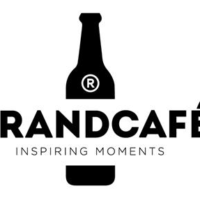5 Key Takeaways for Improving your Branding & Customer Experience
Last week, the expert group branding of STIMA organized a brandcafé ‘Branding & Customer Experience’. 4P square was there to discuss the topic.
Our managing director Raf Van Puyvelde attended as organiser (active member at the expert group Branding for 15 years) & Marketing Consultant Rutger Desmedt as Customer Experience expert.
They came back at the 4P square office with a pocket full of insights, and are eager to share the key takeaways of the event with you.
1. Collect data with a customer smile
That’s what Sharingbox is all about. Not just a simple photo booth for random fun.
The sharingbox supports different marketing objectives: acquire a database of emails, engage customers, social media activation,….
How do they help companies to combine marketing with a customer smile? It helps your company, or your brand to engage with your audience during your events.
Sharingbox is a way for your guests to have a fun time in front of the camera and to leave your party with a souvenir, the printed version of the photo.
At the same time, it helps your company to enjoy a new marketing & communication support: by for example adding a voucher to the printed version of the photo.
People want to show their photo to their peers, the voucher attached by default. Would you have shown the voucher to your peers without the photo?
2. Set-up a closed feedback loop
Set-up a closed feedback loop managing the customer experience requires an outside-in approach.
It is crucial to put the customer perspective into the conversation. If you want to come to insights that are workable, it is crucial to empathize with your customers in real-life.
Quantitative research can help you, but are often not useful for later implementation. The importance of Contextual Interview Research
3. The importance of Contextual Interview Research.
Erik Roscam Abbing, founder & Chief Visionary Officer at Zilver Innovation stressed the importance of Contextual Interview Research: workable insights are discovered by stepping out of your desk.
Start by asking a handful of customers if they have some recent anecdotes they have around your company.
Ask for their reflections and emotions during these interactions. This will help you to start digging for the real ‘why’, which is much more powerful than the ‘what’.
4. Connectivism as a learning theory for the digital age
In a nutshell, connectivism argues that digital media have caused knowledge to be more distributed than ever, and it is now more important to know where to find knowledge people require, than it is for people to internalise it.
At Studio 100, they translated this in their kids engagement platform ‘WanaGoGo’ by forcing kids to use their ‘platform network’ to gather the right information for finishing quests.
Ask yourself this question: what could connectivism mean in terms of improving the customer experience at your company?
5. “Premium coffee and innovative machines don’t mean anything if the client service isn’t at the same level”
This was the conclusion of Wim De Schutter, Marketing Director of Nespresso BeLux. And he is right!
At 4P square we define CX as the sum of all customer interactions within a company across all channels, products, and services spanning the whole customer life cycle.
So why would you only empower your support desk to interact with your customers?
At Nespresso, 70% of their 9500 employees are empowered to interact directly with customers. Customer Experience is not a thing for you customer service department.
All employees that come in contact with a customer should be empowered to interact directly: from your customer service, your marketing department to even your HR people and finance.
Customer Experience is not just a hot topic. It has always existed, but the thing is: in this age of global connections & commoditized products, customer interactions as a source of dominance are greater than ever.
At 4P square, we have developed a clear model & methodology to manage your customer’s journey.


